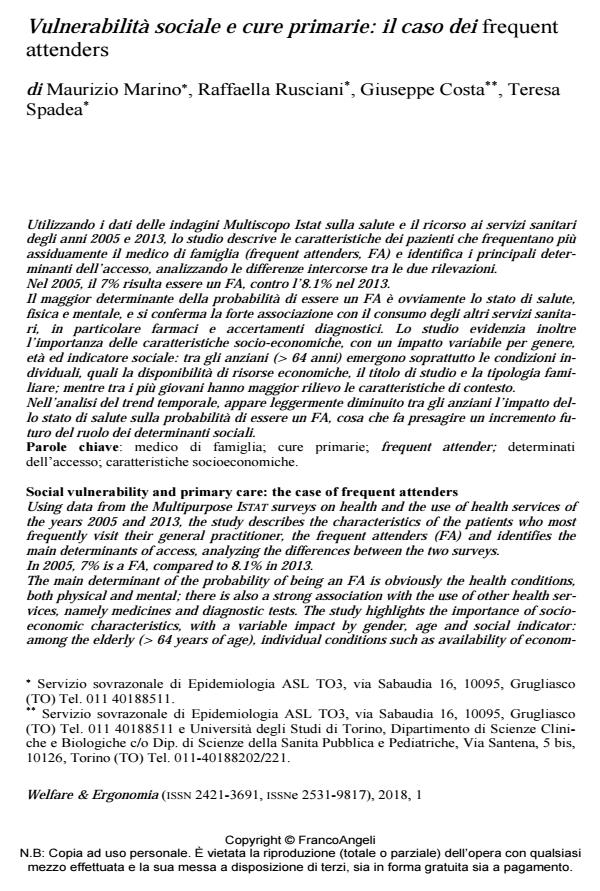Social vulnerability and primary care: the case of frequent attenders
Journal title WELFARE E ERGONOMIA
Author/s Maurizio Marino, Raffaella Rusciani, Giuseppe Costa, Teresa Spadea
Publishing Year 2019 Issue 2018/1
Language Italian Pages 13 P. 73-85 File size 224 KB
DOI 10.3280/WE2018-001004
DOI is like a bar code for intellectual property: to have more infomation
click here
Below, you can see the article first page
If you want to buy this article in PDF format, you can do it, following the instructions to buy download credits

FrancoAngeli is member of Publishers International Linking Association, Inc (PILA), a not-for-profit association which run the CrossRef service enabling links to and from online scholarly content.
Using data from the Multipurpose ISTAT surveys on health and the use of health services of the years 2005 and 2013, the study describes the characteristics of the patients who most fre-quently visit their general practitioner, the frequent attenders (FA) and identifies the main de-terminants of access, analyzing the differences between the two surveys. In 2005, 7% is a FA, compared to 8.1% in 2013. The main determinant of the probability of being an FA is obviously the health conditions, both physical and mental; there is also a strong association with the use of other health ser-vices, namely medicines and diagnostic tests. The study highlights the importance of socio-economic characteristics, with a variable impact by gender, age and social indicator: among the elderly (> 64 years of age), individual conditions such as availability of economic re-sources, education and family type have the strongest impact; while among the younger ones, contextual characteristics are more relevant. In the analysis of the temporal trend, the impact of the health conditions on the probability of being a FA appears slightly diminished among the elderly, which suggests a future increase in the role of social determinants.
Keywords: General practitioner; primary care; frequent attenders; determinants of access; so-cioeconomic characteristics.
Maurizio Marino, Raffaella Rusciani, Giuseppe Costa, Teresa Spadea, Vulnerabilità sociale e cure primarie: il caso dei frequent attenders in "WELFARE E ERGONOMIA" 1/2018, pp 73-85, DOI: 10.3280/WE2018-001004